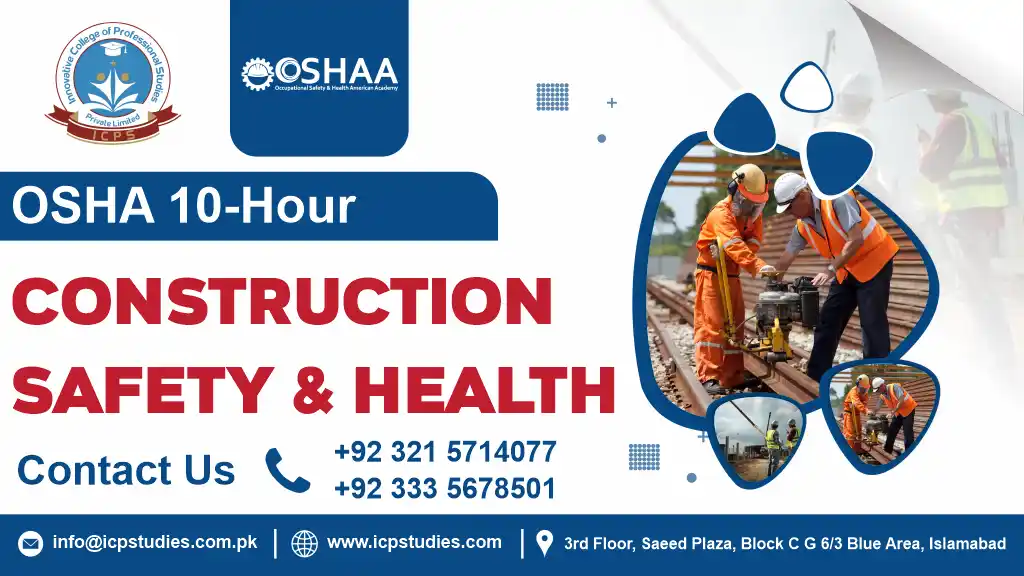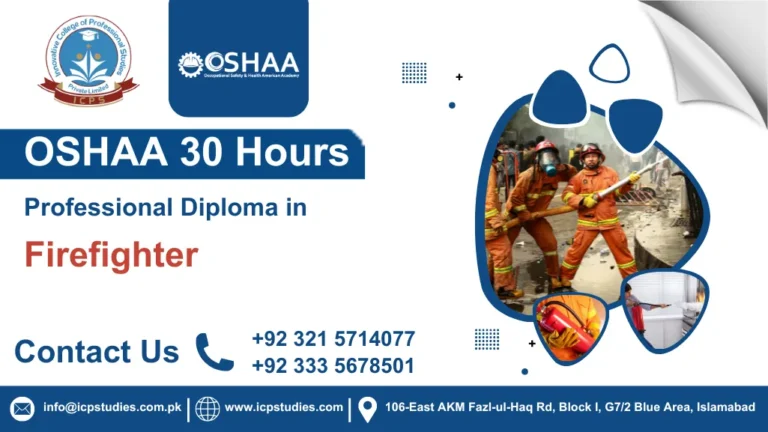In the bustling world of construction, safety is paramount. The complexity and inherent risks of construction work require a robust understanding of safety practices to prevent accidents and injuries. One valuable resource for workers and employers alike is the OSHA 10-Hour Construction Safety and Health course. Designed by the Occupational Safety and Health Administration (OSHA), this course aims to provide essential safety training for those involved in construction.
The OSHA 10-Hour Construction Safety and Health course is a comprehensive training program developed by OSHA to introduce workers to basic safety and health principles specific to the construction industry. It is a foundational course designed to educate workers about the safety regulations and practices necessary to maintain a safe work environment.
The OSHA 10-Hour Construction Safety and Health course is an essential training program for anyone involved in the construction industry. It provides workers with critical knowledge and skills to ensure their safety and health on the job site. By understanding and implementing the safety practices covered in the course, workers and employers can create a safer work environment, reduce the risk of accidents, and contribute to a more efficient and productive construction process.
All About OSHA 10-Hour Construction Safety and Health
Course Overview
The OSHA 10-Hour Construction Safety and Health course is a widely recognized training program developed by the Occupational Safety and Health Administration (OSHA) to promote workplace safety and health in the construction industry. This course is designed for workers who are new to the construction field or who need a refresher on basic safety practices. It provides an essential overview of safety regulations and best practices to help reduce workplace hazards and ensure a safer working environment.
The OSHA 10-Hour Construction Safety and Health course is an essential training program for construction workers and employers committed to improving safety standards on job sites. By providing critical knowledge on safety regulations and hazard management, this course helps create safer working environments and contributes to the overall health and well-being of construction workers. Whether you are new to the field or seeking to update your safety knowledge, the OSHA 10-Hour course is a valuable investment in your professional development and workplace safety.
Study Units
- Introduction to OSHA
- Scaffolds
- Excavations
- Hand and Power Tools
- Stairways and Ladders
- Health Hazards in Construction
- Common Hazards in Construction
- Personal Protective and Lifesaving Equipment (PPE)
- Material Handling, Storage, Use, and Disposal
- Cranes, Derricks, Hoists, Elevators, and Conveyors
To enroll in the OSHA 10-Hour Construction Safety and Health course, participants typically need to meet the following requirements:
- Age Requirement: Participants should be at least 18 years old.
- Basic Literacy: A good understanding of English is important, as course materials and instruction are primarily in English.
- Job Relevance: While not mandatory, it is beneficial for participants to be involved in the construction industry or related fields.
- No Formal Prerequisites: There are generally no strict prerequisites for this course, although prior knowledge of basic safety concepts can be helpful.
- Course Registration: Participants must register for the course through an authorized training provider.
- Payment: Course fees must be paid as required by the training provider.
- Commitment to Attend: Participants should be prepared to attend the full duration of the course (10 hours) to receive certification.
The OSHA 10-Hour Construction Safety and Health course is designed for:
- Construction Workers: Employees involved in various construction roles who need foundational safety training.
- Supervisors and Foremen: Individuals overseeing construction teams who require knowledge of safety protocols.
- New Employees: Those entering the construction industry who need basic safety awareness.
- Safety Personnel: Individuals involved in implementing safety measures on construction sites.
- Contractors and Subcontractors: Workers who need to understand safety regulations relevant to their roles.
- Health and Safety Committee Members: Employees engaged in promoting safety initiatives within construction projects.
The course focuses on hazard recognition, safety practices, and regulatory compliance specific to the construction industry, helping to create a safer work environment.
Learning Outcome
1. Introduction to OSHA
- Understand OSHA’s role and regulations: Gain foundational knowledge about the Occupational Safety and Health Administration (OSHA), its mission, and its regulatory framework.
- Recognize OSHA’s impact on the construction industry: Learn how OSHA regulations affect construction operations and safety practices.
- Navigate OSHA standards and resources: Understand how to access and apply OSHA standards and resources to improve workplace safety.
2. Scaffolds
- Identify scaffold types and components: Recognize different types of scaffolds and their essential components.
- Understand scaffold safety requirements: Learn about the safety requirements for erecting, using, and dismantling scaffolds.
- Implement proper scaffold inspection and maintenance: Ensure scaffolds are inspected regularly and maintained according to safety standards.
3. Excavations
- Understand excavation hazards: Identify common hazards associated with excavation work, including cave-ins and utility strikes.
- Implement excavation safety practices: Apply safety measures and procedures to minimize risks during excavation activities.
- Use protective systems effectively: Learn about various protective systems (e.g., trench boxes, shoring) and their proper use to safeguard workers in excavation sites.
4. Hand and Power Tools
- Identify common hand and power tools: Recognize the types of hand and power tools used in construction and their applications.
- Understand tool safety requirements: Learn about safety practices for using, maintaining, and storing hand and power tools.
- Implement safe tool use procedures: Ensure that tools are used correctly and safely to prevent injuries and accidents.
5. Stairways and Ladders
- Identify hazards related to stairways and ladders: Recognize common hazards associated with the use of stairways and ladders on construction sites.
- Understand safety requirements for stairways and ladders: Learn about design, maintenance, and usage requirements to ensure safety.
- Implement safe practices for stairways and ladders: Apply safety measures to prevent falls and other accidents involving stairways and ladders.
6. Health Hazards in Construction
- Identify health hazards specific to construction: Recognize various health risks such as exposure to hazardous substances, noise, and heat stress.
- Assess the impact of health hazards: Understand the potential health effects of identified hazards on workers.
- Implement measures to mitigate health risks: Develop and apply strategies to reduce or eliminate health risks on construction sites.
7. Common Hazards in Construction
- Recognize common construction hazards: Identify frequent hazards encountered in construction, including falls, struck-by incidents, and caught-between situations.
- Understand hazard control measures: Learn about effective measures to control or eliminate common construction hazards.
- Develop a hazard prevention plan: Create and implement a plan to address and manage common hazards in construction.
8. Personal Protective and Lifesaving Equipment (PPE)
- Identify types of PPE and their uses: Recognize various personal protective and lifesaving equipment used in construction.
- Understand PPE selection and usage requirements: Learn how to select and use appropriate PPE for different tasks and hazards.
- Ensure proper PPE maintenance and training: Implement procedures for the maintenance, inspection, and training on the use of PPE.
9. Material Handling, Storage, Use, and Disposal
- Understand material handling hazards: Identify risks associated with the handling, storage, and disposal of construction materials.
- Implement safe material handling practices: Apply procedures to safely handle, store, and dispose of materials to prevent accidents and injuries.
- Develop effective storage and disposal procedures: Create and enforce procedures for safe material storage and environmentally responsible disposal.
10. Cranes, Derricks, Hoists, Elevators, and Conveyors
- Identify types of lifting and hoisting equipment: Recognize different types of cranes, derricks, hoists, elevators, and conveyors used in construction.
- Understand safety requirements for lifting equipment: Learn about safety standards and regulations for operating lifting and hoisting equipment.
- Implement safe practices for equipment use: Apply safety measures and procedures for the operation, inspection, and maintenance of lifting equipment.
These learning outcomes are designed to provide comprehensive knowledge and practical skills to ensure safety and health on construction sites, covering a broad range of essential topics and practices.
FAQs about OSHA 10-Hour Construction Safety and Health







